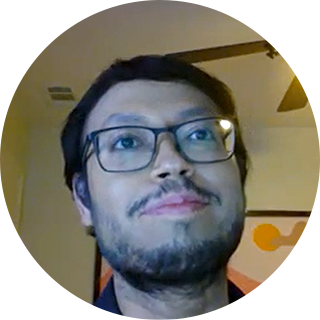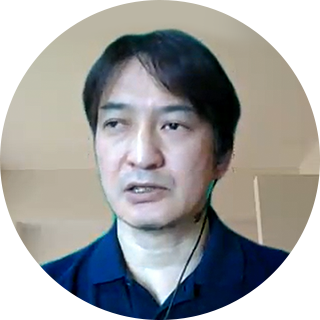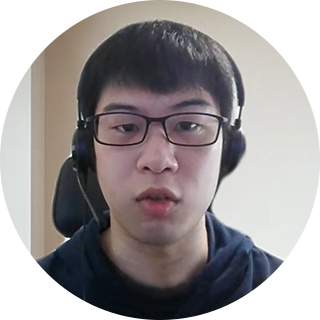The Importance of Interoperability in the Blockchain
In recent years, blockchain technology has been widely adopted in line with the spread of crypto-assets such as bitcoin. The notable feature of this technology is a method of recording transaction information over a network among multiple computers. It has been highly expected as a method that can prevent tampering and fraud without having a centralized management function, and now has a wide array of uses.
“Blockchain is built on advanced technologies including networking technologies. For example, P2P technology is used in blockchain and improves the fault tolerance of servers, helping build a strong infrastructure from the viewpoint of data protection. We can expect it to be an infrastructure for securely managing not only cryptographic assets but also various other digital assets,” says Shingo Fujimoto, Senior Researcher, Blockchain Research Center, Security Laboratory.
By using blockchain, we can seek the possibility to create new economic zones where currencies are not imperative. For example, car ownership transactions in car-sharing services, where car owners rent their cars to others while they are not using them, are within the scope of blockchain. The ownership of a car can be ‘Tokenized’ using blockchain, then the token will be sold or bought by users. This new type of marketplace is called 'Token Economy'.
Obviously, a new technology is inseparable from challenges. The biggest challenge in the token economy is connecting different blockchains securely. Specifically, in the example of car sharing described above, the management of car usage rights and fees are made up of different economic zones, that is, different blockchains. It is not technically easy to connect the two without depending on the basis or content of each.
"In this world, we need technology that allows different blockchains to work together to build cross-industry reliability, that is, to ensure blockchain interoperability." Fujimoto says.
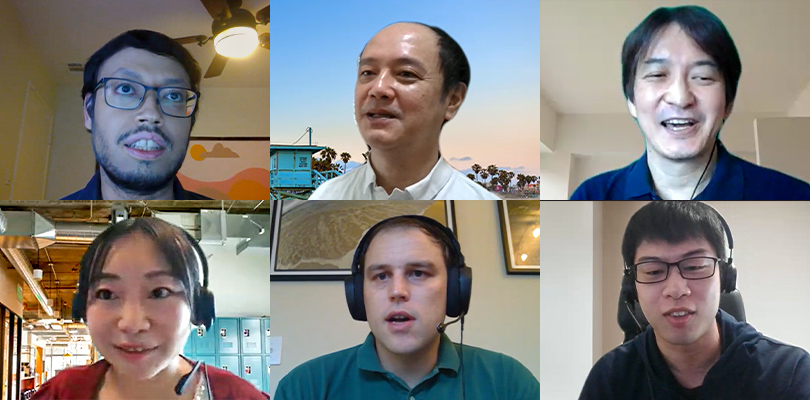
"ConnectionChain", A Key to Token Economy
Blockchain Research Center of Security Laboratory, to which Fujimoto belongs, has been engaged in research and development on these technical issues since the launch of the original blockchain research project in 2015.
At that time, cryptocurrency assets such as bitcoin were the focus of attention. When he thought of it as a platform of open settlement and cryptocurrency assets using P2P, Jun Kogure, Senior Expert at Blockchain Research Center, says, "I felt a great potential in the blockchain, which is the underlying public distributed ledger technology."
”Blockchain is based on key technologies of cryptography such as a hash function and digital signature. These are areas that Fujitsu Laboratories has been researching, and I thought we could use our knowledge to expand the potential of blockchain," says Kogure.
In response to "the problem of how to connect different blockchains" I pointed out earlier, Fujitsu Laboratories developed “ConnectionChain”. Fujimoto explained further regarding the aforementioned car-sharing business.
"For example, how do we guarantee if the owner of a car can surely receive money by renting the car to someone or the user will return the car to the owner properly? ConnectionChain has an "escrowed trade function" that increases the reliability of trade between service users who cannot fully trust each other. This escrowed trade function enables you to benefit from the rollback of transactions when some transaction is failed for the trade. For example, when you use a car-sharing service, you make a deposit to ask the agent to transfer the usage fee (through escrow contract), and the right to use the designated car is transferred to you. If, for some reason, you cannot rent this car, the agent refunds the money to your account, assuming the conditions for payment are not met.”
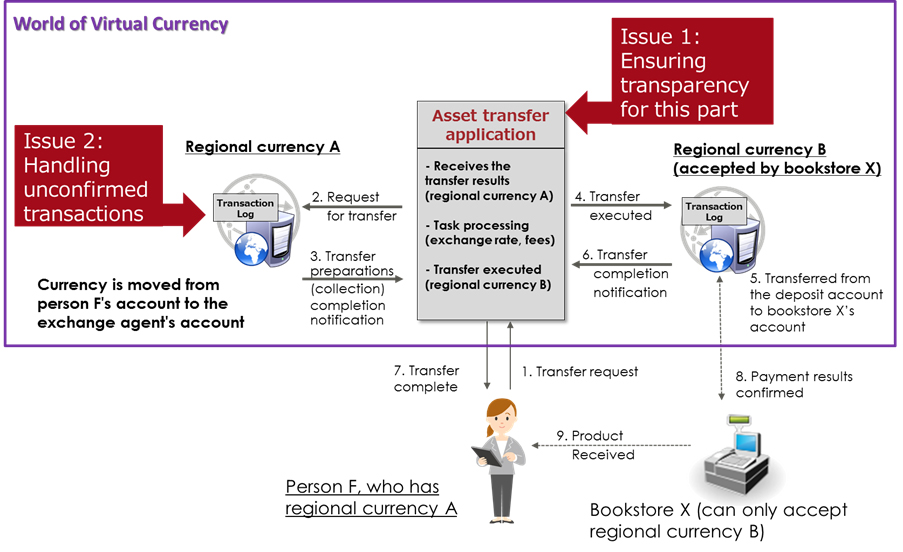 Technology to securely connect blockchains "ConnectionChain": Conceptual diagram to easily and securely execute settlement between different cryptographic assets
Technology to securely connect blockchains "ConnectionChain": Conceptual diagram to easily and securely execute settlement between different cryptographic assetsIn 2017, Fujitsu Laboratories developed ConnectionChain. After conducting field trials with customers, we decided to enhance this technology as an open source project. As Accenture had also developed a similar technology, we, together with Accenture, proposed to establish a new project in "Hyperledger," which is a community to promote open source blockchain projects under the Linux Foundation. In 2020, this proposal was accepted and led to the launch of the new project, "Hyperledger Cactus."
The team members based in the United States are actively promoting the Hyperledger Cactus project, taking advantage of their location. Hart Montgomery is leading the research, who joined the company shortly after earning a PhD in computer science from Stanford University.
“We believe Hyperledger Cactus will play an important role for blockchain dissemination in the future. Using this technology as a foundation, companies can build blockchain software. Thus, we adopt a modular structure so that users can use only what they need,” Montgomery says.
Open Source Software that Works Well with Blockchains
Another important activity the Blockchain Research Center is working on at Hyperledger is "Hyperledger Ursa", a project on a shared cryptographic library.
“Until a few years ago, Hyperledger allowed each project to implement its own encryption method. In this way, if the encryption code is broken, the transaction will not proceed. So Ursa provided a single cryptographic library for all projects,” explains Montgomery.
Montgomery, a specialist in cryptography, is also highly regarded for his expertise in the Hyperledger Project, leading the technical effort as one of the elected Technical Steering Committee (TSC) members.
The relationship between Fujitsu and the Linux Foundation goes back a long way to its founding, and Fujitsu is actively involved as a top-level platinum member. Fujimoto emphasizes that blockchain is particularly compatible with open-source development models.
“In IT system business up until now, it was important to find the ways to encourage people to buy our products. But in the blockchain world, the people involved have a key to increasing its technological value. Therefore, we are aiming to create a co-creation business model, actively disclosing our own technologies to the outside the company so that people will appreciate our technologies and develop them together with us, "says Fujimoto.
How to Protect Privacy with Transparent Blockchain Technology
Besides implementation of interoperability, blockchain has other issues. Blockchain can be divided into two types: a "public blockchain" which is open to anyone, like bitcoin, and a "consortium blockchain" which is a closed blockchain made up of like-minded companies. The latter is primarily used for enterprise applications. The primary reason for this is to ensure security and confidentiality, which is one of the major challenges of blockchain. Mebae Ushida, a member of the Research Center's group that is involved with expanding the functions of ConnectionChain, is working to protect privacy, and says,
"Blockchain works as a monitoring function by sharing data and making it visible to each other, but in the future, when it is used in everyday life, the issue of how to ensure the privacy of data will arise."
What kind of technical approach should we take to this problem? In response to this question, Yasushi Takahashi, who is an expert of key technologies for security and encryption at the Research Center, introduces "zero knowledge proof" as an example.
“Zero knowledge proof is a technology to prove that you know the data you want to keep secret without disclosing the target data itself. It was invented in the 1980s as an important technique for cryptography and privacy protection, but it is now attracting renewed attention with the rise of blockchain technology, " he says.
"Key management" is another issue. "Many blockchains use public key cryptography, but if the private key used for user authentication is compromised, it can be easily used for spoofing. Therefore, we are also researching distributed key management methods to solve this problem,” says Ushida. The research and development results produced by Security Laboratory is being effectively utilized for key management, which isn’t exactly a new issue in the security industry.
Ushida says, "We place importance on communication with the Field Trial team, because there are many cases where technology alone is not enough to solve problems in the research of privacy and security protection. She also says that especially in blockchain, scalability is a major issue as well as privacy protection. These two issues have a difficult relationship of trade-off, and we are advancing research by taking a well-balanced approach.
When she was a student, Ushida had a chance to learn cryptography, which, she said, was a “fateful encounter." She has been using her knowledge to protect privacy and cyber security. Ushida, who is also a mother of two children, used childcare leave and reduced work hours to build up her career as a researcher, and expressed her desire for the future by saying, "I want to continue working always thinking about improving my skills."
Approaching Challenges that can only be Done by a Global Team
Blockchain Research Center is engaged in research at three sites, Japan, the United States, and China, as a "Global Team" that transcends these boundaries. The team is broadly divided into two groups: one working on standardization and open source software, and the other working on technology development for functional enhancement.
Fujimoto, who is responsible for ConnectionChain and the OSS project “Hyperledger Cactus,” entered this world from the information engineering field. He is now working on research and development with cryptographic security experts. He says that he is "interested not only in cryptography but also in how to use it" and that close communication during weekly video conferences with the U.S. team is important since Hyperledger’s activities are mainly conducted in the U.S.
Takahashi, who is on the same team as Fujimoto, majored in mathematics in his graduate school days and joined Fujitsu Laboratories. At present, he is mainly engaged in research on fundamental technologies such as cryptography, working together with the Project manager, Arnab Roy of FLA, Montgomery, and other researchers from the U.S. team, while also communicating via video conference.
"What I think is the appeal of Fujitsu Laboratories is that they are putting efforts also into fundamental research and technological development. Of course, unlike academic research, corporate research always involves the responsibility and difficulty of keeping up with the latest social issues and research trends, but at the same time, I find it interesting. "says Takahashi.
As early as six months after joining the company, Takahashi had the experience of presenting research results at an international conference held in the United States, and he has exchanges with Roy and Montgomery of the U.S. team.
Fujitsu Laboratories established the Overseas training program for young researchers to encourage them to gain overseas experience. Some researchers, like Kogure and Fujimoto, experienced working overseas as assignees. This approach is based on the belief that social issues can be resolved fast if diverse researchers with specialized fields are actively involved in each project as one global team, aiming to develop the world-leading technology in each domain.
"Aggressive Security" and "Protective Security"
According to research firm Gartner, blockchain has passed the peak period of excessive expectations (Hype) and is now nearing the point of becoming a mainstream technology.
Montgomery says, “The use of blockchains is expanding, as we can see some retailers adopt this technology in terms of food safety. There's intense interest from many companies and our research is aimed at making blockchains easier and more secure. "
Roy also notes that Covid-19 Pandemic accelerated online shift in business and daily activities, and says “Demand for reliable services are increasing rapidly. How do we realize the trust we have in the real world in the digital world? This is a big challenge. "
While expanding the use of blockchains, security and privacy protection technologies continue to be required for their safe use. Ushida says as follows:
"I think the social significance of privacy will increase. I personally believe that young people who have been exposed to digital technology since childhood, have a deep sense of privacy and will enhance their sensitivity more. There is no right answer to privacy protection technology, but we are going to identify what is best and develop technology to realize it.”
Fujimoto concludes by saying, "People tend to think of blockchain as a specialized technology for financial systems, but we see it as a technology that will support society in the future. Security tends to be considered as protective measures like insurance in terms of business continuity, however, blockchain can rather provide ‘Aggressive Security’ measures to create business and generate money. In addition to the traditional ‘Protective security’ measures, we will strengthen this kind of ‘Aggressive Security' measures and continue research and development for evolving blockchain technologies. "



